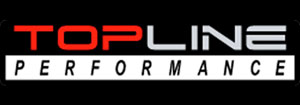Any nitrogen is pulled into the trench by the extraction (we’re extracting the air from the whole space through the trench), but also by gravity because it’s heavier than air.
The role of AI in architecture.He emphasises that narrow AI and generative tools will augment rather than replace architects.

The focus should be on leveraging AI for time-consuming tasks (like unit layouts) to free up architects to focus on their core competencies and creative work.He suggests avoiding discussions about general AI and instead focusing on practical applications.. 3.Next generation of architects (Gen Z).

Randy is optimistic about the current generation of architecture graduates, describing them as loyal, dedicated, and environmentally conscious.He predicts a 5-7 year 'renaissance' period where these new professionals will drive significant change in the industry, before many potentially move into startups or entrepreneurial ventures.. 4.

Evolution of architectural education.
He notes that traditional architectural education needs to adapt to tech-savvy students who often know more about certain tools than their professors.They’re trying to push things from a legislation perspective.
Legislation is important, because it leads to clear guidance which industry professionals can use in their day-to-day work.LETI have taken it upon themselves to look at embodied carbon in order to put into a single benchmark what the UK Green Building Council (UKGBC), RIBA, CIBSE and others are doing.
It’s positive that individual institutions are there to provide very detailed guidance for specific consultants and professionals, but we also need to have an overarching look at where the industry is heading as a whole.. LETI and Design for net zero carbon.Last year LETI published some of the first documents offering advice on designing for net-zero carbon: The Climate Emergency Design Guide, and The Embodied Carbon Primer.
